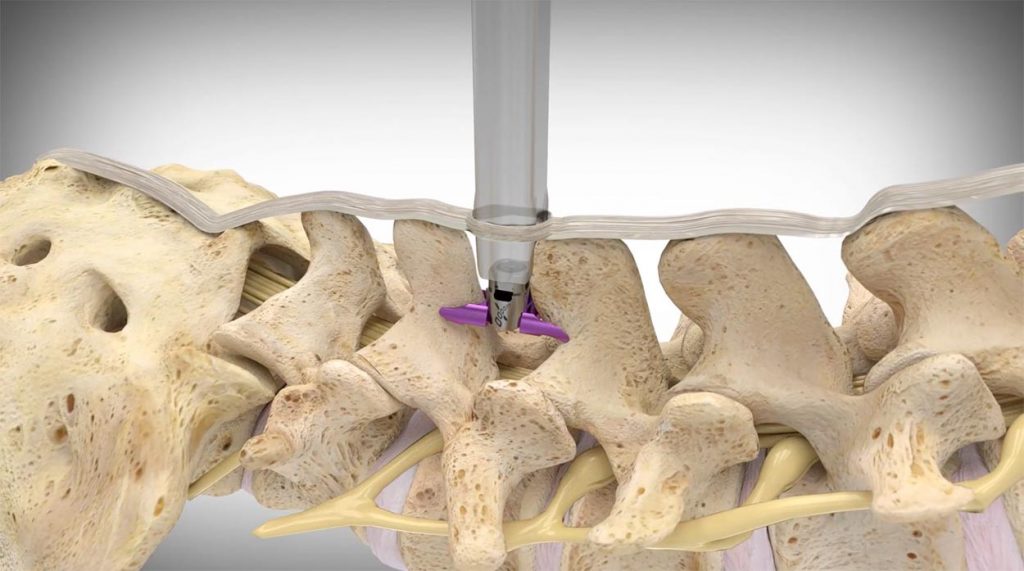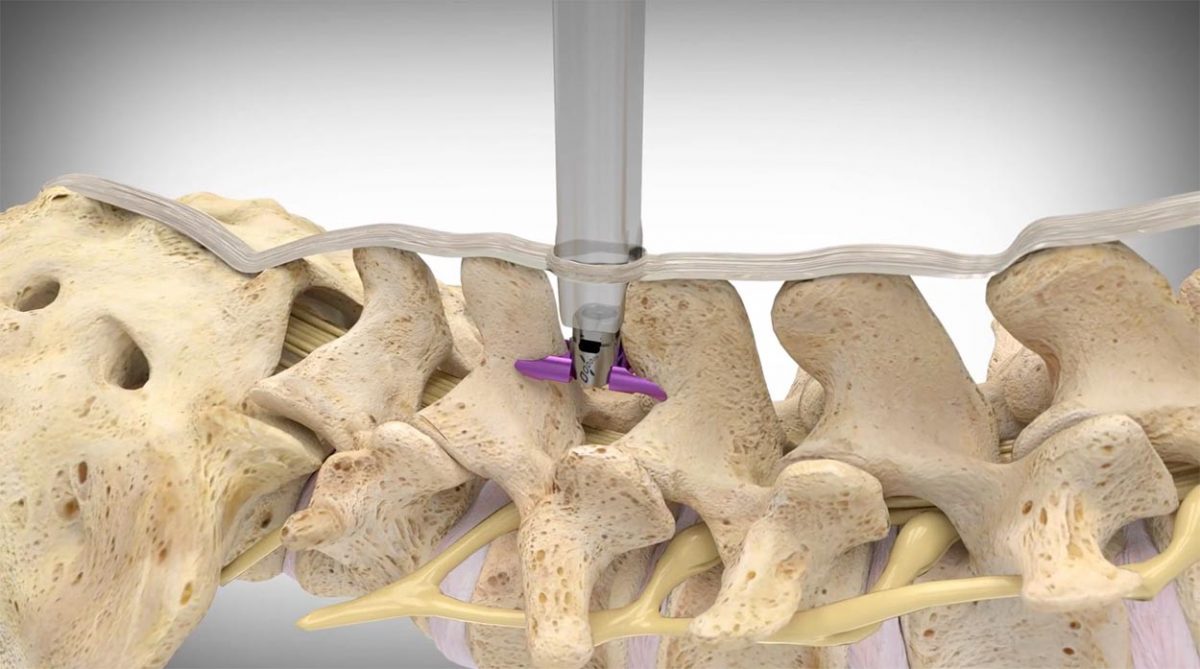Vertiflex Procedure
![]()
Call (703) 520-1031 or use the form below to send us your contacts.

As medical technology advances, people living with lower back pain have more treatment options than ever before. One of these treatments is the Vertiflex procedure, used primarily to alleviate back and leg pain caused by lumbar spinal stenosis.
What is the Vertiflex™ Procedure?
Spine has a canal surrounded by vertebrae through which the spinal cord runs. Lumbar spinal stenosis is a condition in which there is an abnormal spinal canal narrowing. As the canal narrows, the pressure is placed on nerves. The symptoms of lumbar spinal stenosis include:
- Lower back pain
- Shooting pain
- Numbness, tingling and/or weakness in the leg
- Weakness in the foot
Left untreated, the condition can worsen to the point where surgery is recommended. The Vertiflex procedure for spinal stenosis is a minimally invasive medical procedure in which a specially designed implant is inserted in the spine to restore the correct spacing. Widening the space between vertebrae relieves pressure being placed on nerves.
How is the Procedure Performed?
The Vertiflex procedure is an FDA-approved system that uses a trademarked Vertiflex implant called a Vertiflex Superion interspinous spacer. The procedure steps are as follows:
- Patient lays face down on the table
- Physician numbs the incision spot with a localized anesthetic
- A small half inch-inch incision is made to accommodate insertion of a small tube
- Guided by a real-time x-ray. a tube (aka dilator) is used to push tissue out of the way so there is no need to cut through tissue inside the body
- The Vertiflex implant is inserted between the designated vertebrae
- The implant wings are adjusted to spread the vertebrae apart, relieving the pressure being placed on the nerves
- Implant is secured in place
- The incision is closed
The procedure only takes approximately a half hour. More than one spinal decompression device can be inserted.
What are the Benefits of the Procedure?
The benefits of the Vertiflex procedure include:
- Minimally invasive procedure
- Minimal blood loss
- Reduced risk of infection because there is no open spine surgery
- Tissue is moved rather than cut so the healing process is simpler
- Spine is not destabilized
- There is a high success rate
- No hospital stay is required
- No general anesthesia is required
Vertiflex complications are seldom experienced. The lumbar support devices or implants are made of titanium or a titanium alloy, so some people have a small risk of experiencing a reaction to the metal. Any invasive procedure also presents a risk of infection.
Side effects
Side effects are usually minor. Since an incision is made and closed with stitches, there may be mild soreness for a week. Infection is unlikely to develop, but any medical procedure requiring an incision poses some risk. For approximately six weeks, the patient will need to avoid strenuous activity, including lifting objects, twisting, and bending.
The Vertiflex procedure can quickly reduce pain within a few days.
Safe Alternative
Until the Vertiflex implant procedure was developed, patients with lumbar spinal stenosis faced living with pain or undergoing major spinal surgery when other treatment options failed. The Vertiflex procedure has provided relief for thousands of patients who had given up hope of living without pain. When conventional treatments fail to relieve pain associated with lumbar spinal stenosis, your physician may consider the Vertiflex procedure as the best option.
Who is a candidate for the Procedure?
The Vertiflex procedure is used primarily to treat patients who have moderate lumbar spinal stenosis. However, any patient with a spinal condition that also involves spinal stenosis could be a candidate. The typical patients who might benefit from the Vertiflex procedure are those the physician believes could benefit from a spinal fusion, people considering major spinal surgery like a laminectomy, and people who are not good candidates for surgery.
